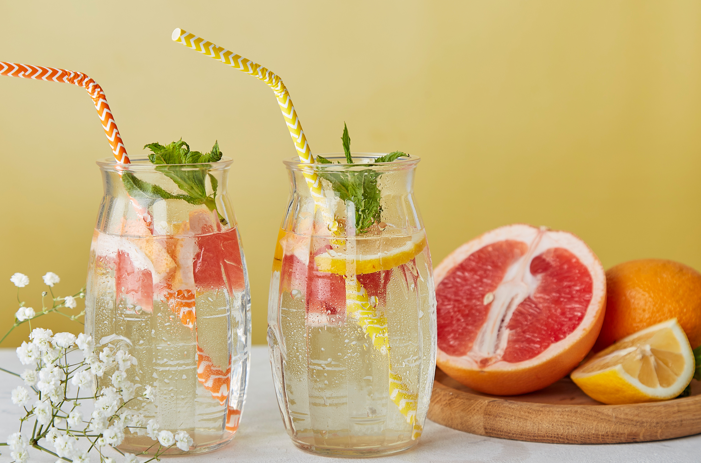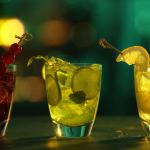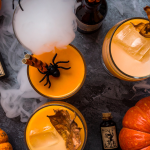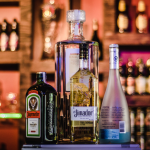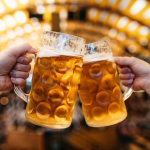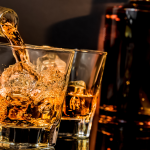Hard seltzers have quickly become a favorite drink choice for many people. These fizzy, flavored beverages mix alcohol with sparkling water and usually have fewer calories than beer. But are they just a passing trend, or will they stick around for the long haul? Let’s explore the rise of hard seltzers and what the future might hold for them.
Key Takeaways
- Hard seltzers started gaining popularity due to their light and refreshing taste.
- They appeal to health-conscious consumers because they are often low in calories and carbs.
- Social media played a big role in boosting the popularity of hard seltzers.
- The market for hard seltzers has become crowded, with many big brands joining in.
- Future trends suggest that hard seltzers will continue to evolve with new flavors and ingredients.
The Origins of Hard Seltzers
Early Innovations in Alcoholic Beverages
The idea of a light, refreshing alcoholic drink isn’t new. Back in 1993, Coors introduced Zima, a clear, malt-based beverage. Although Zima didn’t last long, it set the stage for future innovations in the alcoholic beverage market.
The Birth of Spiked Seltzer
Fast forward to 2013, Nick Shields launched Spiked Seltzer. This was one of the first drinks to mix carbonated water, alcohol, and natural flavors. It was marketed as a low-calorie, gluten-free alternative to beer and wine. Spiked Seltzer found a niche audience and paved the way for the hard seltzer trend.
The Role of Social Media in Popularity
Social media played a huge role in making hard seltzers popular. People shared their favorite flavors and brands online, creating a buzz. This online chatter helped hard seltzers become a staple in coolers and on store shelves.
Discover the latest offerings at Payless Liquors, including the Busch Light Buckets. Stay updated with our newsletter and explore a variety of beers, wines, and liquors. Visit us at our Indianapolis location or contact us for more information.
Why Hard Seltzers Became Popular
Health-Conscious Choices
One of the main reasons hard seltzers have become so popular is because they appeal to people who are making health-conscious choices. Most hard seltzers are low in calories, usually between 90 and 110 per can. They also have low sugar content, often ranging from zero to 4 grams. This makes them a great option for those who are watching their calorie intake or trying to reduce sugar consumption.
Variety of Flavors
Another reason for their popularity is the wide variety of flavors available. From classic options like black cherry and lime to more unique flavors like cucumber peach, there’s something for everyone. This variety allows consumers to find a flavor they love, making hard seltzers a versatile choice for any occasion.
Marketing Strategies
Effective marketing strategies have also played a significant role in the rise of hard seltzers. Brands like White Claw and Truly have used sleek packaging and targeted advertising to attract a broad audience. Social media has been a powerful tool, with influencers and celebrities often showcasing these beverages in their posts. This has created a viral buzz, making hard seltzers a trendy choice among younger generations.
Hard seltzers have tapped into the growing demand for healthier, low-calorie alcoholic beverages, making them a popular choice for a wide range of consumers.
The Market Boom and Saturation
Rapid Growth and Investment
The hard seltzer market saw explosive growth starting around 2018. Brands like White Claw and Truly led the charge, quickly becoming household names. This surge in popularity attracted major investments from big beverage companies. For instance, Anheuser-Busch InBev (ABI) introduced several hard seltzer brands, including Natural Light and Bud Light Seltzer. By May 2021, there were about 600 active SKUs in NielsenIQ-tracked off-premise scan data, showing just how crowded the market had become.
Major Players Enter the Market
As the demand for hard seltzers grew, more and more major players entered the fray. Companies like Boston Beer, the maker of Truly, and Constellation Brands, which launched Corona Hard Seltzer, invested heavily in this category. Even smaller craft breweries tried to get a piece of the action. However, the market became so saturated that it was hard for new brands to stand out. White Claw, with its relative restraint, managed to maintain a strong position despite the influx of competitors.
Challenges of Market Saturation
With so many brands flooding the market, consumers started to feel overwhelmed. The sheer number of options made it difficult to choose, leading to confusion and a decline in overall sales. Some companies, like Boston Beer, even had to discard excess inventory rather than sell it at a discount. The market’s rapid expansion also meant that only a few brands could dominate, leaving many smaller players struggling to survive. Despite these challenges, hard seltzers have carved out a permanent place in the alcohol industry, even if the initial craze has cooled down.
Current Trends in Hard Seltzers
Innovative Flavors and Ingredients
Hard seltzers are no longer just about basic citrus and berry flavors. Today, brands are experimenting with bold new flavors like watermelon, pineapple, and even coffee and tea-infused varieties. This innovation keeps the market fresh and exciting for consumers.
Integration into Bars and Restaurants
Hard seltzers have found their way into bars and restaurants, where mixologists are incorporating them into cocktails. This adds another layer of versatility to the category. The convenience of pre-packaged, ready-to-drink options aligns perfectly with the modern consumer’s desire for ease and variety.
Consumer Preferences
Consumers are increasingly looking for low-calorie and low-sugar options. Most hard seltzers fall between 90-110 calories per can and contain only 4-6% alcohol by volume (abv). This makes them a popular choice for those who are health-conscious and prefer mindful drinking habits.
The rise of hard seltzers reflects a broader movement toward more mindful drinking habits, aligning with trends in the alcohol industry like non-alcoholic beverages and eco-friendly packaging.
The Future of Hard Seltzers
Predictions for Market Growth
The hard seltzer market is expected to keep growing. Analysts think it could be worth over $14 billion by 2027. This growth will be driven by new flavors and better recipes. Even though sales have slowed, hard seltzers are not going away.
Expansion into International Markets
Hard seltzers are not just popular in the U.S. Brands are looking to sell them in other countries too. This means more people around the world will get to try them. Companies are rethinking their strategies to fit different tastes and cultures.
Sustainability and Mindful Drinking
People are becoming more aware of what they drink. They want drinks that are better for the environment and their health. Hard seltzer brands are starting to focus on these things. They are making drinks with fewer calories and less alcohol. This fits into the trend of mindful drinking.
The future of hard seltzers looks bright as they adapt to new trends and consumer preferences.
Impact on the Alcohol Industry
Shift in Consumer Preferences
The rise of hard seltzers has reshaped consumer preferences in the alcohol market. Traditional beverages like beer and wine are now competing with these fizzy, low-calorie alternatives. Consumers, especially younger ones, are drawn to the refreshing taste and perceived health benefits of hard seltzers.
Competition with Traditional Beverages
Hard seltzers have created a new competitive landscape. Established brands in beer, wine, and spirits are now launching their own versions of hard seltzers to keep up with the trend. This shift has led to a more diverse market, but it also means that traditional beverages must innovate to stay relevant.
Opportunities for Craft Breweries
Craft breweries have found a new avenue for growth with hard seltzers. By experimenting with unique flavors and ingredients, they can attract a broader audience. This trend offers craft breweries a chance to diversify their product lines and tap into the growing demand for hard seltzers.
The rise of hard seltzers is not just a passing fad; it’s a significant shift in the alcohol industry that offers both challenges and opportunities.
The alcohol industry has seen significant changes recently. These shifts impact everything from production to sales. Curious about how these changes affect your favorite drinks? Visit our website to stay updated and explore more!
Conclusion
Hard seltzers have made a big splash in the world of drinks, and it looks like they’re here to stay. These fizzy, fruity drinks have found a special place in many people’s hearts, especially those who want a lighter, low-calorie option. Even though their super-fast growth has slowed down, hard seltzers are still popular. Companies are coming up with new flavors and ideas to keep things fresh. So, whether you’re at a summer BBQ or just hanging out with friends, you can bet that hard seltzers will be around for a long time.
Frequently Asked Questions
What are hard seltzers?
Hard seltzers are alcoholic drinks made with sparkling water, alcohol, and natural flavors. They are often low in calories and carbs.
Why are hard seltzers so popular?
They are popular because they are light, refreshing, and come in many flavors. They are also low in calories and often gluten-free.
When did hard seltzers become popular?
Hard seltzers started gaining popularity around 2016 and saw a big boom in 2019.
Are hard seltzers healthier than other alcoholic drinks?
Many people choose hard seltzers because they are lower in calories and carbs compared to other alcoholic drinks. However, they still contain alcohol.
What are some popular hard seltzer brands?
Some popular brands include White Claw, Truly, and Bud Light Seltzer.
Will hard seltzers continue to be popular?
Many experts believe that hard seltzers will remain popular due to their variety and health-conscious appeal.

